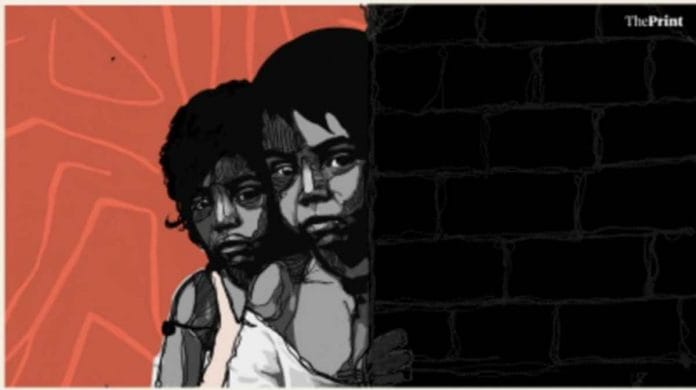Thank you dear subscribers, we are overwhelmed with your response.
Your Turn is a unique section from ThePrint featuring points of view from its subscribers. If you are a subscriber, have a point of view, please send it to us. If not, do subscribe here: https://theprint.in/subscribe/
Everyone recognizes a paedophile as an individual sexually attracted to children. Whether they act on their urges or suppress them is a separate, but crucial, discussion. The World Health Organization classifies paedophilia as a psychiatric disorder, suggesting that the urge to sexually abuse or rape a child requires treatment rather than simple criminalization. For those who seek help, a network of helplines and counselling services are available to manage their impulses. On paper, this therapeutic approach seems logical and fitting.
But zoom in further, and you see a man in a park, ogling children as they play hide and seek unaware of the gaze or the danger that looms over them. Elsewhere, two individuals google for sexually abusive images or videos of children. Somewhere else, criminals track the online demands for such videos and scout for vulnerable children to create such and make money. These actions—even if stemming from a psychiatric condition—have far-reaching consequences. Paedophiles might be diagnosed with a disorder, but their actions create a reality that can’t be ignored: millions of children are abused, raped; and the consequences of this disorder are not contained in a therapy room.
As we grapple with the notion that these men should be treated rather than merely punished, the global conversation continues to struggle with the framing of this issue. A glaring example of this came at the WeProtect Global Summit 2024, the world’s largest event focused on online child sexual abuse, held in the UAE. Despite over 600 multidisciplinary experts from around the world discussing solutions to safeguard children in the digital age, the word “crime” was conspicuously absent from the discussions. This omission is not just a matter of semantics; it reflects a deeper issue within global child protection efforts—an ongoing failure to acknowledge the full scale of the criminal acts tied to this disorder.
The tension between seeing paedophilia as a disorder requiring treatment and as a crime that demands severe consequences is not just academic. It shapes policies, influences public perception, and impacts the effectiveness of efforts to protect children. Until the distinction between a disorder and a crime is fully confronted and addressed, the true scale of child sexual abuse—and the failure to prevent it—will continue to grow.
Semantics is not just about language; it is about how society perceives and addresses critical issues. While a rose may smell the same by any name, calling a crime merely a disorder can diminish its gravity and lead to dangerous consequences. The words we choose matter, as they influence policies, public perception, and the urgency with which we act.
India has demonstrated bold leadership in recognizing this truth. In a landmark judgment, the Supreme Court of India ruled that the term Child Pornography would no longer be used, replacing it with Child Sexual Exploitation and Abuse Material (CSEAM).
This change is far more than symbolic. The term CSEAM leaves no room for ambiguity—it highlights that these materials are the result of a crime and an act of severe exploitation against children.
In a country like India, where child rights remain a pressing issue, this shift in terminology reflects a broader commitment to safeguarding children. It aligns with ongoing efforts to strengthen laws and policies against child abuse which criminalizes the creation, distribution, and consumption of exploitative material involving minors. The judiciary’s acknowledgment of the power of words is a step forward in addressing systemic flaws and ensuring that perpetrators face justice.
India’s approach stands as a significant example for global stakeholders. It demonstrates how shifting terminology can lead to stronger legal frameworks, enhanced public awareness, and a more victim-centered perspective in addressing such crimes. It shows that the fight against child sexual exploitation requires not just technological innovation but also a rethinking of language and narratives.
What makes this issue even more pressing is its borderless nature. CSEAM is created, shared, and consumed across borders, facilitated by the anonymity of the digital world. Tackling such crimes demands a borderless framework—a coordinated global response where nations share intelligence, resources, and strategies. Countries must adopt unified definitions, stronger international laws, and collaborative mechanisms to ensure that perpetrators cannot exploit legal loopholes across jurisdictions.
This is where advocates like Bhuwan Ribhu, India’s noted child rights activist and Founder of Just Rights for Children, emphasize the need for an organized, international response. Speaking at the WeProtect Global Summit, Bhuwan Ribhu called for the creation of an international database to track and share information on sex offenders. His argument underscores the urgency: when these criminals operate in a highly coordinated and organized manner, our response cannot remain fragmented or disorganized.
As the global community moves forward, India’s actions remind us that language is a powerful tool in shaping how we combat child exploitation. Words matter, and with them, we can drive the systemic change needed to protect children everywhere, transcending borders to ensure their safety.
These pieces are being published as they have been received – they have not been edited/fact-checked by ThePrint


